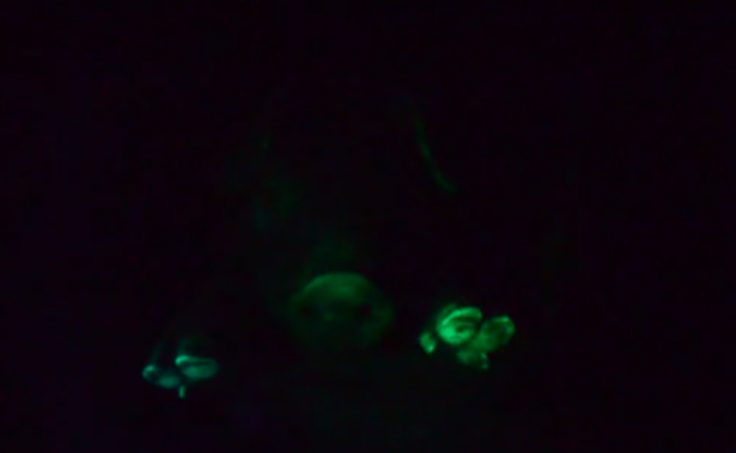The Week In Science: Glowing Pigs, Robot Muscles And Fistbumps For Your Health

This week in science, we found out it’s okay to eat peanuts while pregnant, heard about some of the hurdles to getting widespread solar power off the ground in Hawaii, and looked back on a year’s worth of science: the research and controversies, funny videos, inventions, as well as the gorgeous photos of nature and space. But there’s still a lot more science that broke this week – even in the midst of a holiday season!
Scientists used an electron microscope to peer inside the inner workings of a battery and see how electrons and positive ions flow under real-world conditions. [UPI]
Chinese scientists have used jellyfish genes to create fluorescent piglets. The pigs glow green under a black UV light. Inserting the jellyfish genes is an easy way for scientists to test the genetic insertion techniques that the scientists hope to use on the pigs in order to create enzymes used to treat human hemophilia patients. [Honolulu Star-Advertiser]
The U.S. government is gearing up to start regulating head and face transplants. The regulations are actually aimed at making it easier for people to opt in to donate their hands and faces – like other organs – and at setting the technical standards required of these intense operations. [The Verge]
Furthering the advance of the robot apocalypse, scientists have created a tiny metal muscle that’s 1,000 times stronger than pitiful human muscle. Researchers made a twisting motor out of a long ribbon made of the metals chromium and vanadium dioxide. When heated, the metal muscle changes shape and acts like a tiny catapult. It can throw objects 50 times heavier than itself a distance of more than five times its own length. [Raw Story]
Could insulin pills replace insulin shots someday? Indian scientists have found a cheap and reliable way to deliver insulin to the bloodstream in pill form. They encase the insulin in a tiny sac made of fat, which guards it from stomach enzymes and ensures safe passage to the small intestine. They also attach the insulin to folic acid, a vitamin that helps activate transportation of the insulin molecule through the intestinal wall into the bloodstream. [LiveScience]
Forensic experts are working on a way to find the truth hidden in the eye – but maybe not in the way you might think. The field of corneal imaging is focused on being able to refine pictures reflected in a person’s eye. If the authorities can identify environments and even faces hidden in snapshots of eyes, it could be an important tool in efforts to rescue kidnapping victims or sexually abused children. But of course, it raises the specter of privacy issues as well. [Christian Science Monitor]
A fun little piece of speculative analysis: what could go wrong if we terraformed Mars? [Science 2.0]
One physician is advocating that we start replacing handshakes with fist bumps. The latter is much less likely to spread infectious bacteria. [National Geographic]
© Copyright IBTimes 2024. All rights reserved.











